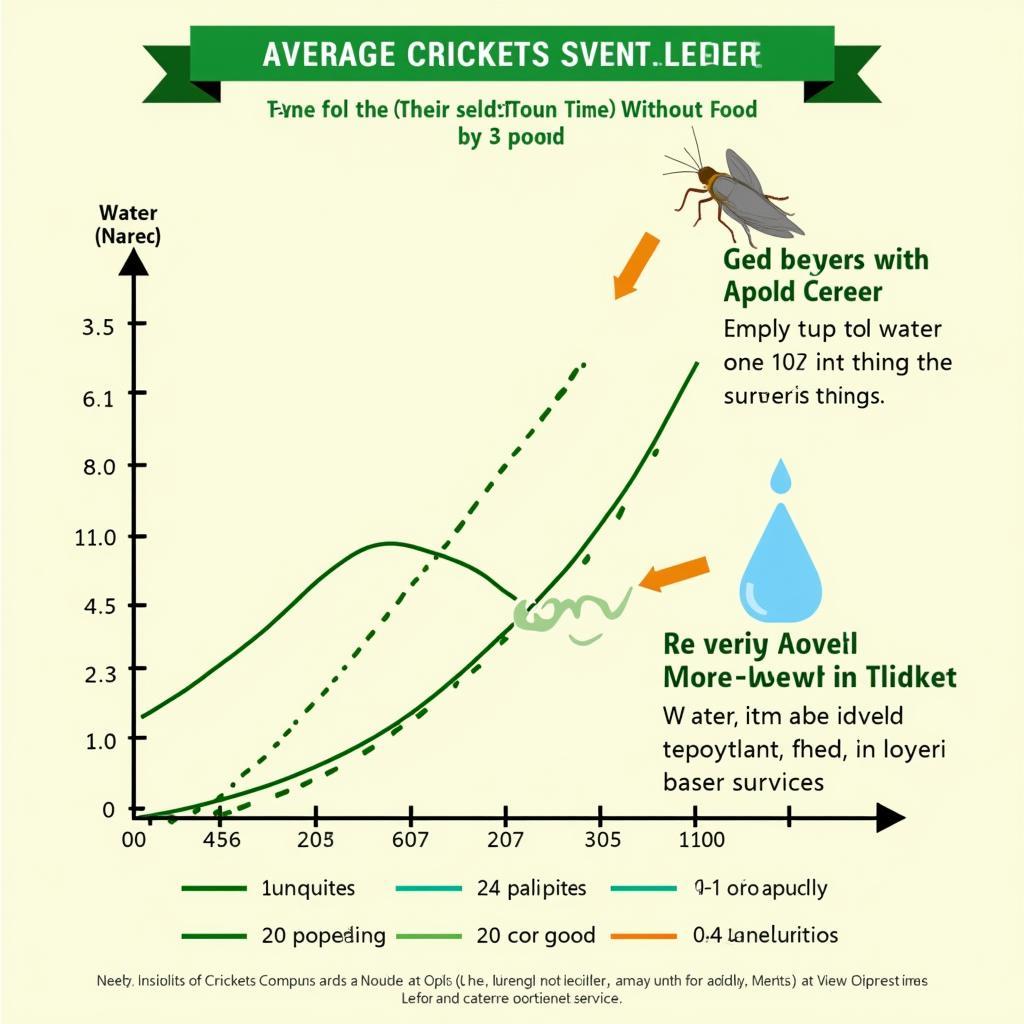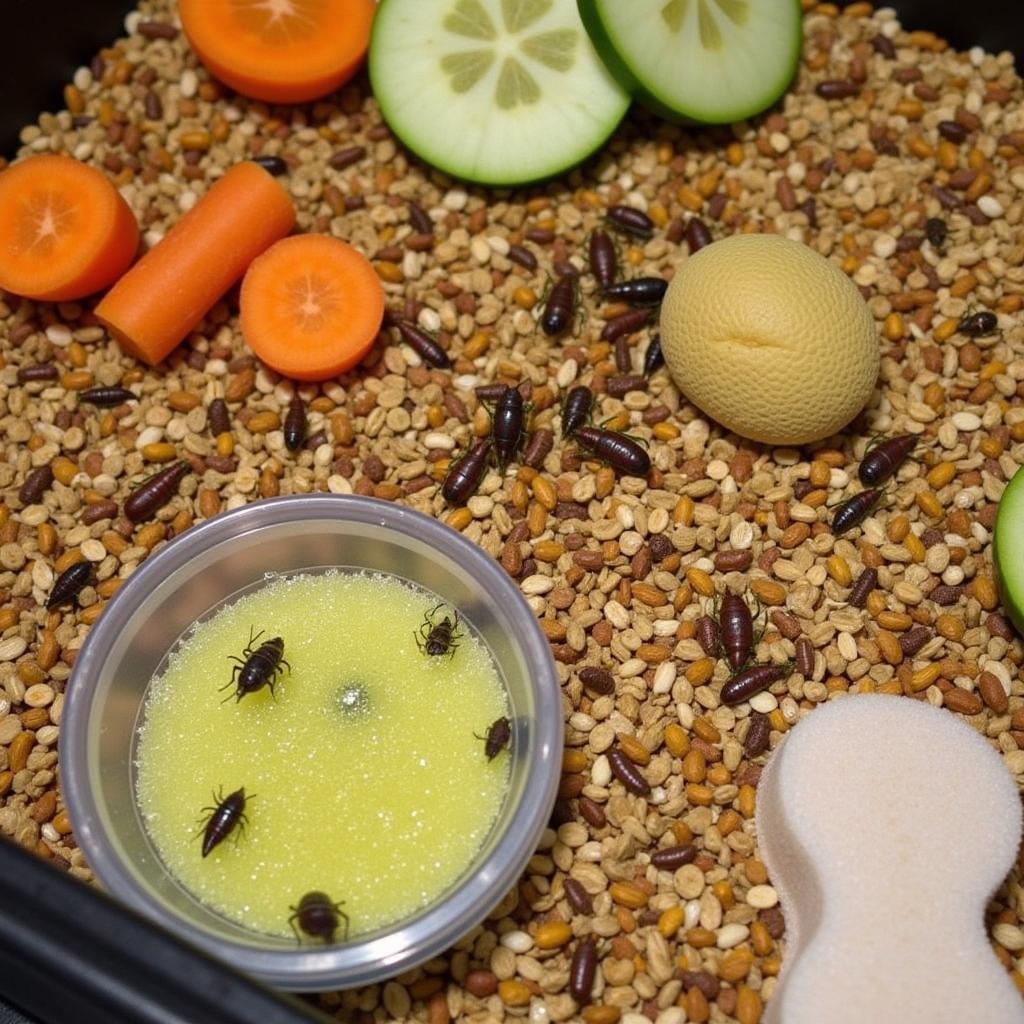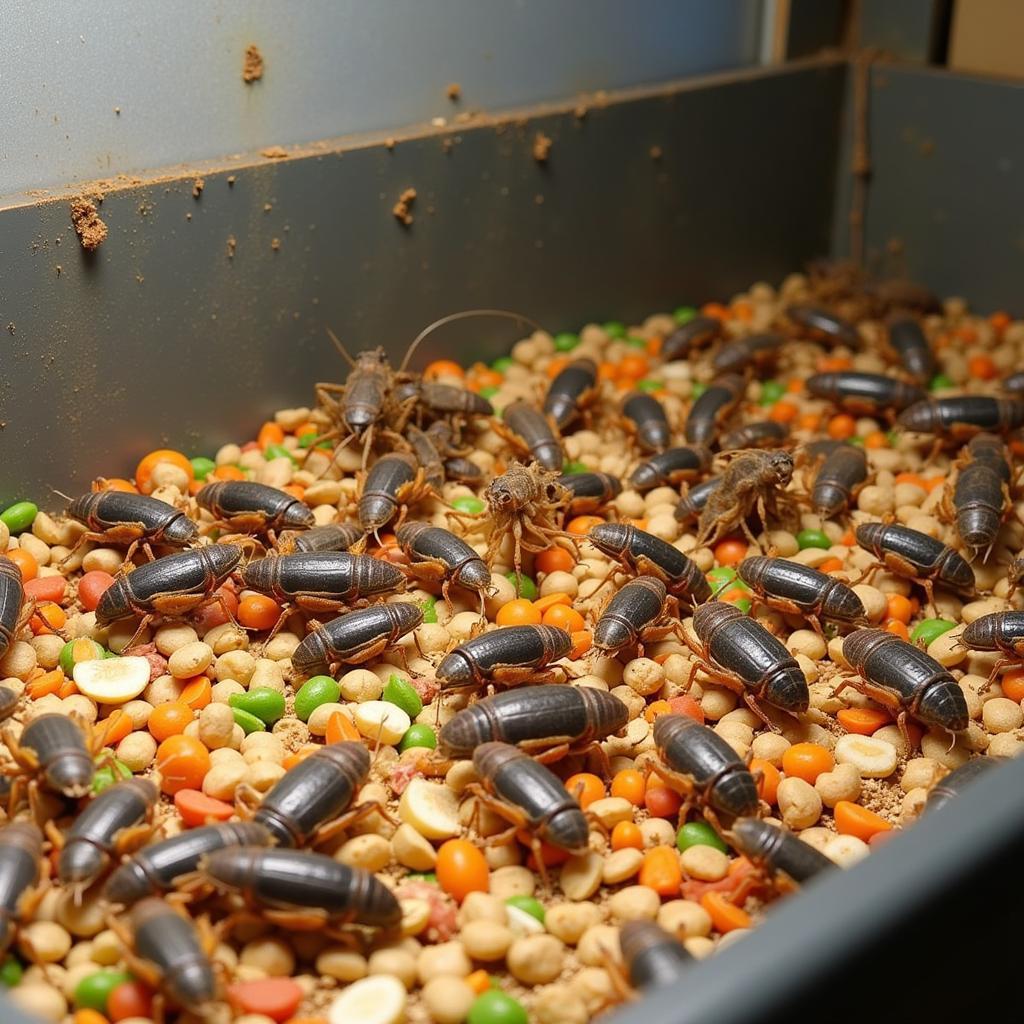Crickets, those chirping champions of the insect world, are surprisingly resilient creatures. But just How Long Can Crickets Go Without Food? Understanding their dietary needs is crucial, especially if you’re keeping them as pets or using them as feeder insects for your frozen reptile food. Let’s delve into the fascinating world of cricket sustenance.
Cricket Fasting: A Deeper Dive
While crickets are known for their hearty appetites, they can surprisingly survive for a period without food. The length of time depends on several factors, including the cricket’s age, size, species, and environmental conditions. Generally, adult crickets can survive for 1-2 weeks without food, while younger nymphs might only last a few days. However, water is far more critical for their survival. Crickets can only go a few days without water, often succumbing to dehydration before starvation. Providing a consistent water source is paramount to their well-being.
Factors Influencing Cricket Survival Time Without Food
Several key factors play a role in how long a cricket can withstand a food shortage:
- Age: Younger crickets, especially nymphs, require more frequent feeding due to their rapid growth and development. Adult crickets, having reached maturity, have slower metabolisms and can endure longer periods without food.
- Size: Larger crickets have greater energy reserves than smaller ones, allowing them to survive longer fasts.
- Species: Different cricket species have varying metabolic rates and nutritional requirements, influencing their ability to withstand food deprivation.
- Temperature and Humidity: Higher temperatures accelerate a cricket’s metabolism, increasing their need for food. Similarly, low humidity can lead to dehydration, further stressing the cricket and shortening its survival time.
 Cricket Survival Time Without Food
Cricket Survival Time Without Food
How to Tell If Your Crickets Are Hungry
Observing your crickets’ behavior can provide clues about their hunger levels. Here are some telltale signs:
- Increased Activity and Aggression: Hungry crickets may become more active and even cannibalistic, especially in overcrowded conditions.
- Searching Behavior: You might notice crickets constantly exploring their enclosure, searching for food sources.
- Eating Non-Food Items: Desperate crickets may resort to eating their own shed skin (exuvia) or even frass (cricket droppings).
Preventing Starvation in Your Cricket Colony
Providing a balanced diet is crucial for maintaining a healthy cricket colony. Offer a variety of foods, including commercial cricket feed, fresh fruits and vegetables, and protein sources like fish flakes or cat food. Remember to remove any uneaten food regularly to prevent mold growth.
 Feeding Your Cricket Colony
Feeding Your Cricket Colony
What Happens When Crickets Don’t Eat?
Without adequate nutrition, crickets become weak and lethargic. Their growth and development are stunted, and they become more susceptible to diseases and parasites. Prolonged starvation will eventually lead to death.
“Ensuring your crickets have consistent access to both food and water is essential for their overall health and longevity,” says Dr. Emily Carter, a renowned entomologist specializing in Orthopteran insects. “Neglecting their dietary needs can lead to a decline in their population and even complete colony collapse.”
 Healthy Cricket Colony
Healthy Cricket Colony
Conclusion: Keeping Your Crickets Well-Fed
Understanding how long crickets can go without food allows you to better care for these fascinating insects. While they possess a degree of resilience, providing regular access to a nutritious diet and a constant water source is essential for their well-being. By paying attention to their behavior and providing proper care, you can ensure a thriving cricket colony whether you are keeping them as pets or using them as frozen reptile food.
FAQ
- How often should I feed my crickets? Daily feeding is recommended, offering small amounts of food that can be consumed within a few hours.
- What is the best food for crickets? Commercial cricket feed supplemented with fresh fruits and vegetables provides a balanced diet.
- Can crickets drink tap water? Yes, but it’s best to use dechlorinated water or provide a water gel to prevent drowning.
- Why are my crickets eating each other? Cannibalism can be a sign of overcrowding or a lack of food or water.
- How can I prevent my crickets from escaping? Secure your cricket enclosure with a tight-fitting lid and avoid using substrates that can be easily climbed.
- What is the ideal temperature for crickets? Crickets thrive in temperatures between 75-85°F (24-29°C).
- How can I tell if my crickets are dehydrated? Dehydrated crickets may appear shriveled or lethargic.
For further support, please contact us at Phone Number: 02437655121, Email: minacones@gmail.com, or visit our address: 3PGH+8R9, ĐT70A, thôn Trung, Bắc Từ Liêm, Hà Nội, Việt Nam. We have a 24/7 customer service team.